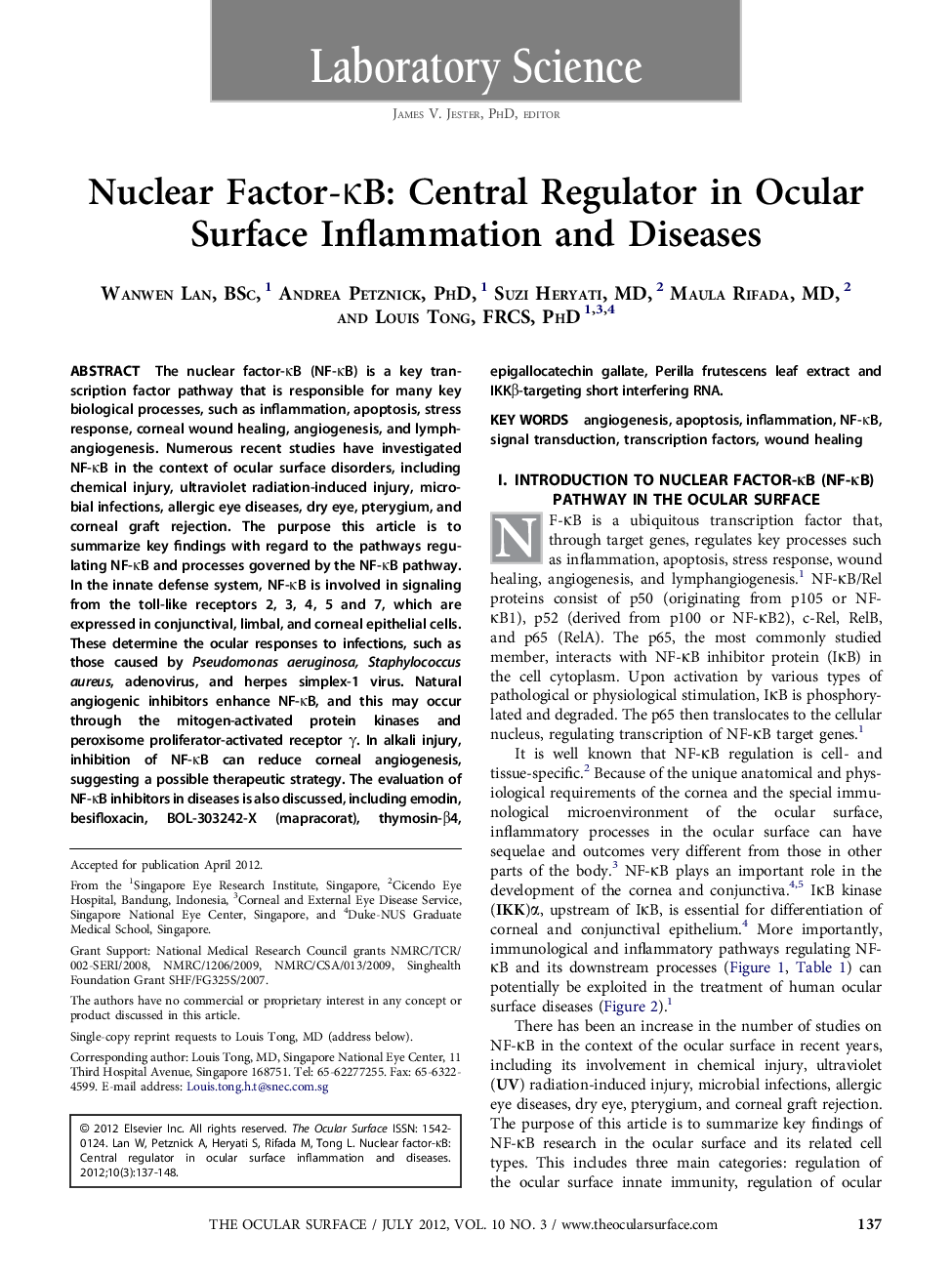| کد مقاله | کد نشریه | سال انتشار | مقاله انگلیسی | نسخه تمام متن |
|---|---|---|---|---|
| 2699004 | 1144109 | 2012 | 12 صفحه PDF | دانلود رایگان |

The nuclear factor-κB (NF-κB) is a key transcription factor pathway that is responsible for many key biological processes, such as inflammation, apoptosis, stress response, corneal wound healing, angiogenesis, and lymphangiogenesis. Numerous recent studies have investigated NF-κB in the context of ocular surface disorders, including chemical injury, ultraviolet radiation-induced injury, microbial infections, allergic eye diseases, dry eye, pterygium, and corneal graft rejection. The purpose this article is to summarize key findings with regard to the pathways regulating NF-κB and processes governed by the NF-κB pathway. In the innate defense system, NF-κB is involved in signaling from the toll-like receptors 2, 3, 4, 5 and 7, which are expressed in conjunctival, limbal, and corneal epithelial cells. These determine the ocular responses to infections, such as those caused by Pseudomonas aeruginosa, Staphylococcus aureus, adenovirus, and herpes simplex-1 virus. Natural angiogenic inhibitors enhance NF-κB, and this may occur through the mitogen-activated protein kinases and peroxisome proliferator-activated receptor γ. In alkali injury, inhibition of NF-κB can reduce corneal angiogenesis, suggesting a possible therapeutic strategy. The evaluation of NF-κB inhibitors in diseases is also discussed, including emodin, besifloxacin, BOL-303242-X (mapracorat), thymosin-β4, epigallocatechin gallate, Perilla frutescens leaf extract and IKKβ-targeting short interfering RNA.
Journal: The Ocular Surface - Volume 10, Issue 3, July 2012, Pages 137–148